The Shiba Inu: A Journey Through History and Culture
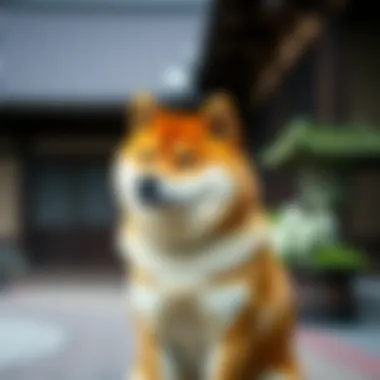
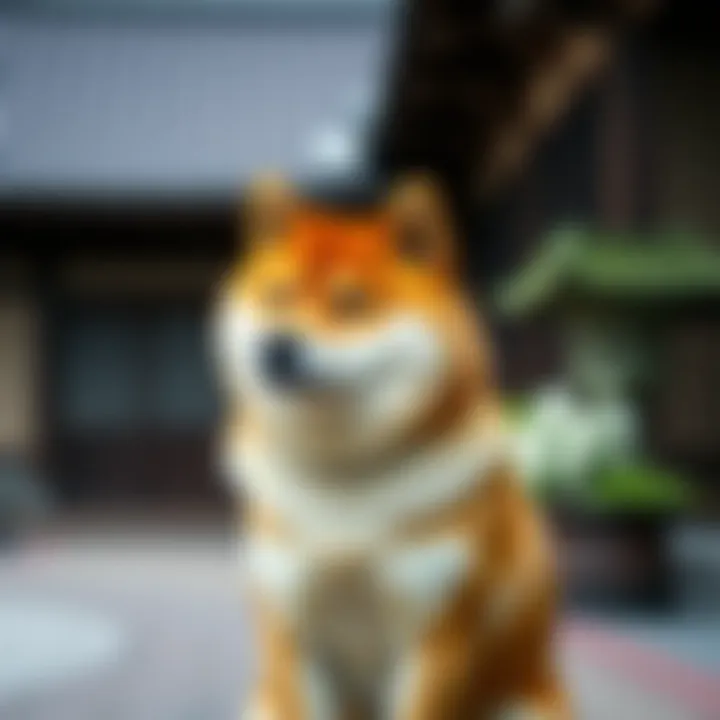
Intro
The Shiba Inu, a charming and agile breed originally hailing from Japan, has captured the hearts of dog lovers around the globe. Its roots can be traced back thousands of years, where it was first bred for hunting small game in the mountainous terrains of the country. This remarkable dog breed is not just an endearing pet; it also carries a wealth of history and cultural significance that reflects Japan's rich traditions. The Shiba Inu stands as a testament to the deep connection between humans and canines, transcending merely being a loyal companion.
In this article, we will explore the historical context, unique breed characteristics, and the cultural significance of the Shiba Inu in Japanese society and beyond. We aim to shed light on what makes this breed so coveted in modern times, from its spirited nature to its presence in contemporary pop culture.
Those seeking a closer look at the Shiba Inu’s journey from ancient times to its current popularity will find this exploration enlightening. The Shiba Inu is not only a representation of its past but also a mirror reflecting the evolving relationship between people and dogs.
Through our examination, we will uncover aspects that contribute to the Shiba Inu's appeal and delve into how it has become a cherished member of families across the world.
Prologue
The Shiba Inu, a dog breed often seen as a vibrant symbol of Japan, is more than just a companion; it embodies a rich tapestry of history, culture, and evolution. As we delve into the various dimensions of the Shiba Inu, it becomes clear that understanding its origin and cultural significance is crucial for anyone interested in canine companionship or Japanese heritage.
Not only does this exploration highlight where the Shiba Inu comes from, but it also sheds light on how the breed has evolved over centuries. From serving practical roles in society to becoming a favored household pet, the Shiba Inu reflects the changing values and lifestyles of the Japanese people.
Furthermore, the Shiba Inu is steeped in Japanese traditions and folklore, making it a remarkable topic for cultural enthusiasts. Its presence in art, literature, and even modern expressions of Japanese identity calls attention to the significance of this breed in reinforcing cultural pride.
As we move forward in the article, we will examine key aspects such as historical context, geographical roots, physical characteristics, and modern significance. This comprehensive approach allows readers—be they investors, analysts, educators, or pet enthusiasts—to appreciate the Shiba Inu beyond its surface beauty, understanding its role as a cultural artifact as well as a beloved animal companion.
"The Shiba Inu is not just a dog; it carries the heart of Japanese tradition within its paws."
By dissecting the components that shape the Shiba Inu’s identity, this article serves as a guide for understanding its roots as well as its place in today’s world. Each section will unfold layers of meaning, enhancing our grasp of the breed's profound connection to Japanese culture.
Historical Context of the Shiba Inu
Understanding the historical context of the Shiba Inu is crucial because it sheds light on how this breed evolved and the role it played in Japanese society. The Shiba Inu is not merely a pet; it's a symbol of Japanese culture, blending history and tradition. By exploring its early ancestry, historical significance, and evolution, we grasp how the Shiba Inu became a beloved family member in households not only in Japan but worldwide.
Early Ancestry
The roots of the Shiba Inu can be traced back thousands of years to the ancient Jomon period, around 300 BC. It is believed that these dogs were bred for their hunting skills, primarily to chase small game in the mountainous terrains of Japan. One intriguing aspect of their ancestry involves their relation to the larger Akita breed, with some experts suggesting that both breeds share a common ancestral lineage, honed for different purposes.
Archaeological evidence shows that dogs resembling Shiba Inus were prevalent in various regions of Japan, indicating that they adapted well to the local environment. These dogs were valued not just for hunting, but for their loyalty and companionship, traits that continue to define the breed today. Interestingly, the term “Shiba” translates to “brushwood,” which is believed to refer to the breed’s size, as they were small enough to navigate through underbrush.
Role in Japanese History
Throughout history, the Shiba Inu has held a significant role in Japan that extends beyond companionship. During the Edo period, which lasted from the early 17th to the mid-19th century, the Shiba Inu became a symbol of power and nobility. They were often kept in samurai households, regarded not only for their intelligence and agility but also as guardians of the home.
"The Shiba Inu is woven into the very fabric of Japanese culture, symbolizing loyalty, perseverance, and a deep connection with nature."
In times of war, especially during World War II, the breed faced peril. Many Shibas were abandoned or killed due to the harsh conditions and scarcity of food. Post-war, efforts were made to revitalize the breed, leading to the establishment of breed standards and protection of the Shiba Inu as a national treasure, showcasing the resilience of both the breed and its advocates.
Evolution of the Breed
As the years rolled on, the Shiba Inu evolved in terms of both appearance and temperament. Early Shibas were bred mainly for function - they were utilitarian dogs, valued for their hunting capabilities. However, with changing social structures and lifestyles, particularly after WWII, the focus shifted towards aesthetics and companionship.
Modern Shiba Inus exhibit a more refined appearance, thanks to selective breeding aimed at enhancing their distinct features, such as the curled tail and fox-like face. This shift also encouraged a gentler temperament, making them more suitable as family pets. Today, they retain their spirited nature, yet they easily bond with humans and adapt to various living environments.
In summary, the historical context of the Shiba Inu reflects not just the evolution of a breed but highlights its intertwining narratives with Japanese culture, society, and resilience. The exploration of these elements gives a deeper appreciation of the Shiba Inu, emphasizing that it is much more than just a dog; it’s part of Japan’s heritage, representing a bridge between past and present.
For further reading on dog breeds and their history, you might find the resources at Britannica and Wikipedia insightful.
Geographical Roots of the Shiba Inu
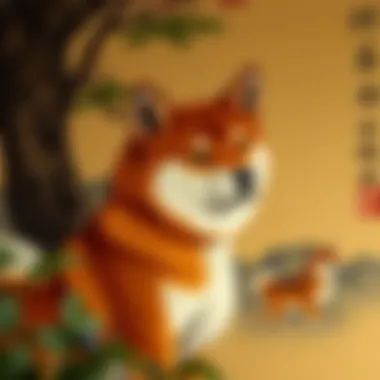
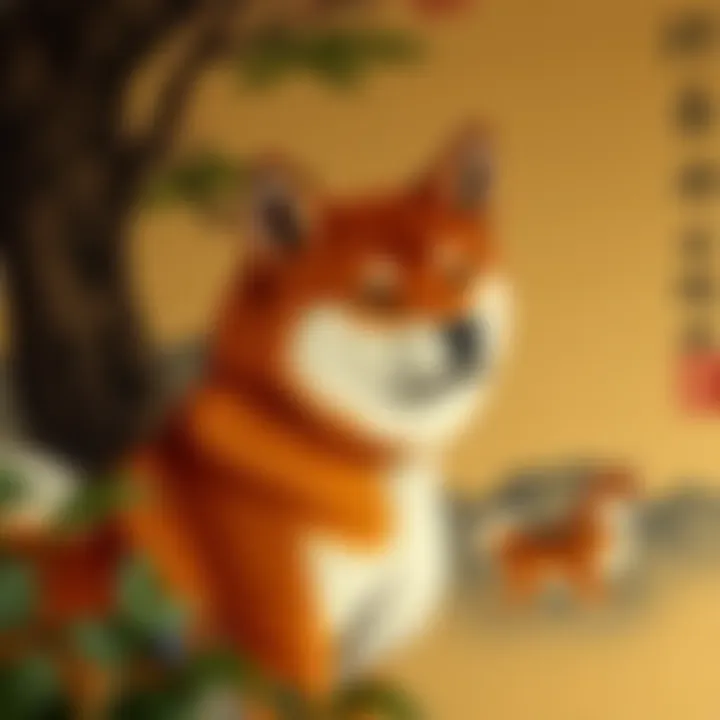
The geographical roots of the Shiba Inu breed are steeped in the rich tapestry of Japan's history, providing crucial insights into not just the dog itself but a significant part of Japanese culture. Understanding the origins of this breed paints a broader picture of its significance across the ages. One can see how the social and environmental factors contributed to the shaping of the Shiba Inu’s very being, influencing its physical characteristics and temperament. By exploring the Shiba Inu's geographical context, enthusiasts, investors, and researchers can appreciate the nuances that make this breed not only a cherished companion but a cultural icon.
Origins in Japan
The Shiba Inu traces its lineage back thousands of years, making it one of the oldest and most revered dog breeds in Japan. Originating in the mountainous regions of the country, these dogs were primarily bred for hunting small game such as birds and rabbits. The native Japanese terrain—a mix of rugged hills, dense forests, and tranquil valleys—served as the perfect backdrop for the breed to flourish.
Historians suggest that the Shiba Inu's name translates directly to "brushwood dog," referring to the type of terrain where these dogs made their homes. As these canines adapted to their environment, they developed a keen sense of smell and agility that made them exceptional hunters. The breed became an integral companion to the early Japanese people, assisting them in their subsistence activities.
Beyond mere utility, the Shiba Inu also embodies a cultural significance that resonates deeply in Japan. It stands as a representation of loyalty, courage, and resilience—qualities that are highly valued in Japanese society. Today, many Japanese consider the Shiba Inu as a national treasure, which reflects the strong bond between the breed and the people of Japan.
Regional Variations of the Breed
As the Shiba Inu became popular throughout Japan, regional variations began to emerge, notifying adaptations to local environmental conditions and hunting practices. One of the notable variations is the difference in coat colors and sizes, which might differ slightly from one area to another, showcasing local breeding preferences.
These distinctions didn’t just stop at physical attributes; they often extended into behavioral traits. For example, dogs from colder regions were bred to have denser fur, while those from milder climates displayed variations that reflected their surroundings. This adaptability has ensured the Shiba Inu's resilience across a variety of ecosystems throughout Japan.
"This breed's ability to thrive in diverse environments is a testament to its endurance and the deep-rooted connection it holds with its homeland."
Overall, understanding the geographical roots of the Shiba Inu allows for a deeper appreciation of the breed, as it reflects centuries of cultural values and practical needs. With such a strong foundation, the Shiba Inu carries the weight of its heritage into the contemporary age, proving how history shapes the present.
Physical Characteristics
Understanding the physical characteristics of the Shiba Inu not only adds depth to our appreciation of this breed but also helps potential owners make informed decisions about their needs and care. These canines possess a distinct set of traits that contribute to their appeal and functionality. The breed’s size, build, coat, coloration, and unique features intertwine with its cultural significance, illuminating why the Shiba Inu remains a cherished companion in many households.
Size and Build
The Shiba Inu is typically small to medium-sized, standing about 13.5 to 16.5 inches tall at the shoulder, with a weight ranging from 17 to 23 pounds. This compact frame gives them a sturdy yet agile appearance, well-suited for navigating the rugged terrain of Japan's mountains where they originally hunted. Their muscular build allows them to be sprightly and energetic, traits that many owners find endearing.
"The Shiba Inu's build is a marvelous blend of strength and elegance, making it not just a companion but a little powerhouse."
When considering the size, it’s vital to note that their physical stature lends itself to adaptability in various living environments. Whether in a spacious home or a cozy apartment, they fit well. However, prospective owners must be aware of the potential risks associated with their small size, particularly during interactions with larger breeds or young children. A good rule of thumb? Supervise playtime, as not every encounter will be gentle.
Coat and Coloration
The coat of a Shiba Inu is another defining characteristic. Known for its double-layered fur, it consists of a soft, insulating undercoat and a stiff, straight outer coat that protects against varying weather conditions. The most common colors found in Shibas include red, sesame (red with black-tipped hairs), black and tan, and cream. Each variation carries its own charm, but they all share a similar luxurious texture.
Moreover, seasonal shedding can be a notable consideration for those thinking of bringing a Shiba home. Twice a year, these dogs shed their undercoats, requiring regular grooming to manage loose fur and keep their coat in pristine shape. This aspect is crucial; a well-maintained coat ensures that the dog not only looks great but also stays comfortable and healthy.
Distinctive Features
What truly sets the Shiba Inu apart are its distinctive features that encapsulate its personality and heritage. Starting with the sharp, erect ears, they give off an alert and curious vibe. The curled tail adds an element of playfulness, and the facial expression often reveals a blend of fierceness and loyalty. Their large, often dark eyes hint at the breed’s intelligence and spirited nature—it’s hard not to feel a connection when gazing into their eyes.
The unique characteristic of the Shiba Inu’s fox-like appearance also ties back to its historical roots. This look is not merely cosmetic but a reflection of their lineage as hunters in ancient Japan. From their agile build to their keen expressions, each feature tells a story of its survival and adaptation to the environment.
When combined, these physical traits not only allow the Shiba Inu to thrive as a capable and spirited companion but also tie into the breed's symbolic representation within Japanese culture, echoing their enduring legacy as a national treasure.
In summary, the physical characteristics of the Shiba Inu are integral to understanding what makes this breed unique. Their size and build, coupled with a striking coat and alluring features, contribute to a robust identity cherished by dog lovers worldwide. For more insights on Shiba Inu care, you can visit resources such as American Kennel Club or consult related articles on Wikipedia.
Cultural Significance
The Shiba Inu holds a unique place within the tapestry of Japanese culture, serving as both a cherished pet and a cultural icon. Its significance stretches beyond mere companionship; it's embedded in the very fabric of Japanese identity. Understanding the cultural implications of the Shiba Inu offers insights into its historical role, symbolic meanings, and how it has evolved in its representation throughout time.
Symbolism in Japanese Culture
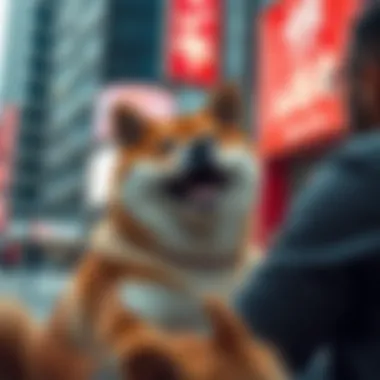
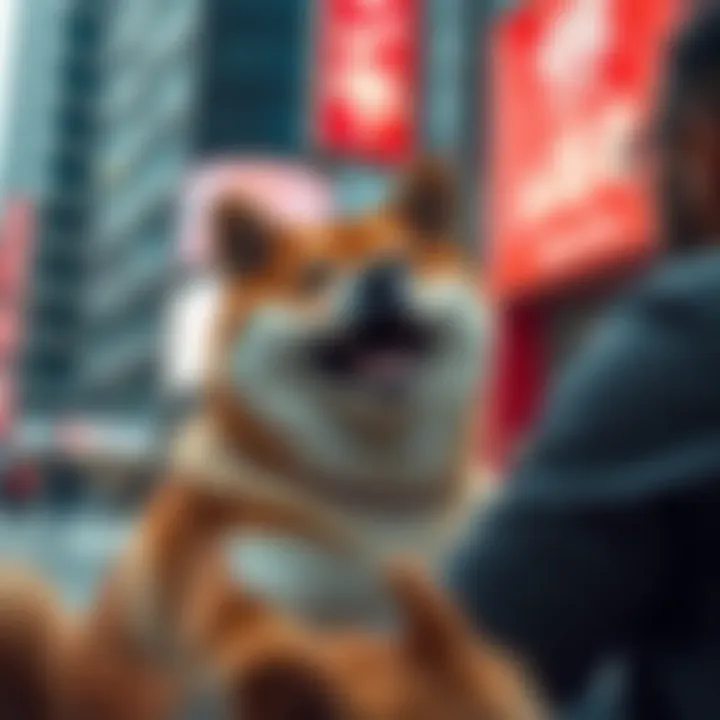
In Japan, the Shiba Inu is more than just a dog; it embodies loyalty, bravery, and high spirits. Many Japanese view this breed as a symbol of good fortune. Shiba Inus have frequently appeared in art and literature, represented in a way that conveys their steadfastness and spirited nature. The breed is often likened to the Shishi, a lion-like creature in Japanese mythology, linking the Shiba Inu to protection and prosperity.
A common saying goes: "A dog will never betray you.” This sentiment speaks volumes about the role of dogs like the Shiba Inu in reinforcing family bonds and companionship. They are often seen accompanying their families during celebrations and rituals, symbolizing loyalty and familial integrity.
Representation in Art and Media
The Shiba Inu has made quite an impression in various forms of Japanese art and media. From ancient illustration scrolls to modern anime, this breed is often depicted in creative expressions that highlight not only its physical beauty but also its personality traits.
For instance, popular forms of Japanese pottery often feature the Shiba Inu as a motif, signifying a life of harmony and domestic bliss. In contemporary culture, this can be seen on platforms like Instagram, where adorable Shiba Inu accounts captivate millions with their playful antics. This breed’s presence in pop culture has transformed it into a social media sensation, increasing its visibility and popularity worldwide.
The Shiba Inu in Japanese Folklore
Folklore stories of Japan often include tales where the Shiba Inu plays a crucial role, symbolizing bravery or sacrificial loyalty. One such story recounts a Shiba Inu that alerted its owner to danger, showcasing the breed’s instinctual protective nature. These narratives not only celebrate the dog's traits but also weave traditional values of bravery and guardianship into the fabric of Japanese society.
A noteworthy example can be found in the story of Hachiko, a dog that waited for its deceased owner daily at a railway station. Although Hachiko was an Akita, the sentiment widely associates loyal canines with Japanese culture, often leading to tales involving Shiba Inus as well. Stories like these cement the breed's place in the collective consciousness of Japan, becoming a testament to the strong bonds between humans and dogs.
In summary, the Shiba Inu's cultural significance in Japan derives from its symbolism of loyalty, representation in art and media, and presence in folklore. Understanding this contributes not only to appreciating the breed itself but also to recognizing its profound impact on societal values and cultural narratives.
"The Shiba Inu is not just a breed; it's a beacon of loyalty and pride within Japanese culture."
For more insights on the cultural aspects of Japanese breeds, you may explore resources such as Britannica, Wikipedia, and various cultural journals available online.
Modern Popularity of the Shiba Inu
The Shiba Inu has found a cherished place in contemporary society, making waves not only in Japan but on a global scale. This section unpacks the layers of its modern popularity, emphasizing the unique aspects that keep the breed in favor among dog lovers and enthusiasts alike. More than just a fluffy companion, the Shiba Inu offers a peek into rich cultural history while embodying distinctive traits that are highly appealing today.
Rise in Global Popularity
The Shiba Inu is often described as the "small dog with a big personality." Originating from Japan, these dogs have traversed oceans and crossed cultures, becoming one of the most sought-after breeds in many countries. People are drawn to the Shiba Inu for several reasons:
- Historical Roots: Their connection to ancient Japan resonates with many. The breed reflects a slice of history and tradition, appealing to those interested in culture.
- Distinctive Appearance: With their fox-like face and curled tail, Shiba Inus stand out as a visually striking breed. Their well-proportioned frame makes them easy to recognize and appreciates.
- Versatile Temperament: They are known for being independent, yet affectionate. Many owners find this balance appealing as it allows for a dynamic relationship between pet and family.
- Adaptability: Shiba Inus can thrive in various living situations, from city apartments to spacious countryside homes, making them suitable for a wide audience.
As a result of these factors, Shiba Inus have been gaining traction, with their numbers swelling in pet registries around the world. News stories and documentaries that showcase these animals often contribute to their growing appeal, prompting many to consider them as their next furry family member.
Social Media Influence
In today's digital age, social media has proven to play a pivotal role in the rise of the Shiba Inu's popularity. Platforms like Instagram, Facebook, and TikTok have become breeding grounds for the beloved breed's stardom. The reasons for this phenomenon include:
- Viral Memes and Videos: The Shiba Inu's expressive face and captivating personalities have been at the center of countless social media memes. The classic "Doge" meme, featuring a Shiba Inu adorned with colorful Comic Sans text, launched the breed into internet stardom, creating a unique cultural impact.
- Influence of Pet Influencers: Many Shiba Inus have gained their own following on social media. For instance, dogs like Shiba Kaito and his buddy are popular figures, drawing attention to their daily adventures and relatable quirks, thus increasing desire for more Shiba Inu pets.
- Community Engagement: Active communities on platforms like Reddit engage dog lovers in discussions about best practices for care, training tips, and funny anecdotes, fostering a sense of belonging for Shiba Inu enthusiasts.
"The blend of visuals, stories, and connections fostered through social media not only fuels the Shiba Inu’s popularity but also encourages responsible pet ownership among potential owners."
Through these various avenues, Shiba Inus have created a robust online presence that resonates deeply with audiences. The breed's journey from the quiet mountains of Japan to global recognition illustrates how cultural phenomena can morph and adapt through modern channels.
Maintenance and Care
When discussing the Shiba Inu, one cannot overlook the significance of proper maintenance and care. These beautiful dogs, with their alert expressions and spirited personalities, require a dedicated approach to their health and well-being. Understanding this aspect is crucial not just for pet owners but also for enthusiasts and anyone invested in breeding or studying the breed.
Nutritional Needs
The nutritional requirements of a Shiba Inu align closely with its active lifestyle and robust build. Due to their heritage as hunting dogs, they thrive on a protein-rich diet. High-quality dog food, preferably dry kibble, provides a balanced combination of proteins, carbohydrates, and fats necessary for their energy levels.
Consider the following when feeding a Shiba Inu:
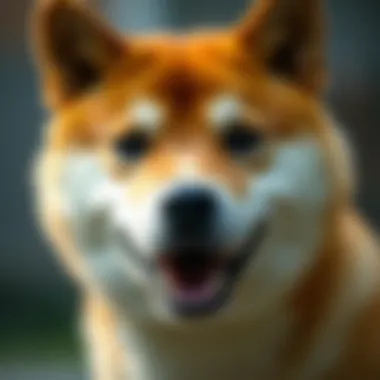
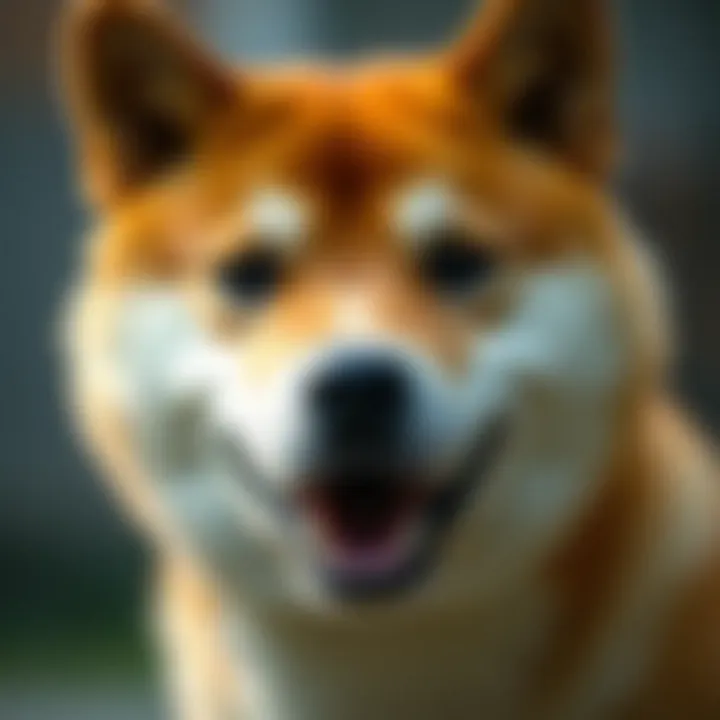
- Protein Sources: Look for ingredients such as chicken, beef, or fish in the food's label. This helps maintain muscle strength and overall wellness.
- Grain-Free Options: While some Shiba Inus digest grains well, others may experience allergies. Grain-free options can be beneficial but consult with a veterinarian first.
- Portion Control: Due to their tendency to gain weight, measuring out their food and bringing in healthy snacks can help maintain their ideal weight.
It's advantageous to consult a vet for tailored advice, especially since factors like age and health conditions influence a dog’s dietary needs.
Exercise and Training
The Shiba Inu is a spirited breed with a high energy level, making regular exercise non-negotiable for their happiness and health. Daily walks or vigorous playtime in a safe environment can prevent destructive behavior.
Here’s how to ensure adequate exercise and training:
- Daily Walks: Aim for at least 30-60 minutes of moderate activity daily. This not only burns off energy but also maintains good cardiovascular health.
- Mental Stimulation: Incorporate puzzle toys or training sessions to engage their minds. Shibas are intelligent and can become bored easily.
- Socialization: Exposing them to different environments, people, and other pets can help mitigate skittishness or territorial behavior.
Training a Shiba Inu can present its challenges due to their independent temperament. Positive reinforcement techniques often yield the best results. Patience and consistency are key in training sessions. Establishing boundary and commands early on can pave the way for a harmonious relationship.
"A well-socialized Shiba Inu tends to be a more balanced companion, both at home and outdoors."
Challenges of Ownership
Owning a Shiba Inu can be both rewarding and challenging. These dogs are known for their spirited personality and resilient nature. While many people are drawn to their lively demeanor and intrepid spirit, potential owners ought to be equipped with an understanding of the challenges that come with this breed.
Behavioral Traits
Shiba Inus are quite intelligent, but that intelligence can sometimes translate into a stubborn streak. They are independent thinkers, much like that one cousin who always has their own opinions about everything. This independent nature can present a challenge during training, as Shibas may not always be inclined to follow commands. Consistent and positive reinforcement training methods tend to work best, but patience is as essential as the treats you’ll be offering.
Additionally, Shiba Inus possess a strong prey drive. Whether it’s a squirrel scurrying across the road or a playful cat, their instinct to chase can lead them into unexpected trouble. Because of this, socializing your Shiba Inu at an early age is important. Not only does it help them learn how to behave around other animals and people, but it also makes for a more manageable pet.
Key Behavioral Considerations:
- Stubbornness: Shibas may resist commands, requiring more effort in training.
- Prey Drive: Their instinct to chase can create challenges during outdoor activities.
- Socialization Needs: Early and consistent socialization is pivotal for their development.
Health Considerations
As with any breed, Shiba Inus come with their own set of health considerations. With a lifespan that can reach up to 15 years, these dogs are generally healthy, but they aren’t immune to certain genetic conditions. One common issue is hip dysplasia, which can lead to joint problems. Keeping an eye on their weight through proper diet and exercise is crucial, as obesity can exacerbate this condition.
Another health concern is patellar luxation, where the knee cap dislocates. This can be particularly problematic in active breeds like the Shiba Inu. Regular check-ups with a veterinarian can help monitor their overall health and catch any potential issues early.
Important Health Factors:
- Hip Dysplasia: Monitor for signs of discomfort and maintain a healthy weight.
- Patellar Luxation: Be aware of mobility changes and seek veterinary advice as needed.
- Regular Health Check-ups: Annual vet visits are essential for staying ahead of potential health problems.
"Understanding the behavioral and health challenges of the Shiba Inu can significantly enhance the ownership experience, allowing for a stronger bond between pet and owner."
Finale
In wrapping up this exploration of the Shiba Inu, it is vital to emphasize the multifaceted significance of this breed within both historical and modern contexts. The Shiba Inu is not just a dog; it embodies an intricate tapestry woven from threads of culture, heritage, and evolving human relationships with animals. This breed's journey from being a hunter's companion in ancient Japan to becoming a global sensation showcases its adaptability and appeal across varying societal landscapes.
The cultural importance of the Shiba Inu lies prominently in how it is perceived in Japanese society. Beyond being a mere pet, it serves as a symbol of pride and loyalty, a reflection of the Japanese spirit itself. The Shiba Inu's presence in folklore and art underscores its role as a cultural icon, bridging the past with contemporary life.
Considering the modern narrative, the Shiba Inu’s rise in popularity reflects broader themes in pet ownership, including companionship, emotional support, and the joy of shared experiences. The breed's cute appearance and spirited nature have positioned it as a favorite amongst celebrities and social media influencers alike, which accelerates its visibility and desirability.
Moreover, this article highlights key elements that potential owners should ponder. Understanding the Shiba Inu's needs, from its dietary requirements to behavioral traits, is crucial for ensuring a harmonious relationship. Prospective owners must consider the breed’s unique characteristics and cultural background that inform its temperament and behavior.
As we analyze the Shiba Inu's past and present, we're reminded that this breed carries with it a legacy steeped in history, serving as both a reminder of traditions and a companion for new generations. A deep appreciation of its roots enhances the bond shared between the Shiba Inu and its owner, enriching both lives in the process.
By understanding the Shiba Inu’s origins and cultural significance, individuals can forge a partnership rooted in respect, understanding, and a shared journey, ultimately fostering a connection that goes beyond simple companionship.
"To own a Shiba Inu is to invite a part of Japan’s charm and character into your home, carrying with it the stories of the past while fitting seamlessly into the present."
As we conclude this article, let us not only recognize the Shiba Inu as a beloved pet but also as a cultural artifact, illustrating the perpetual bond between humans and canines that transcends time and geography.















